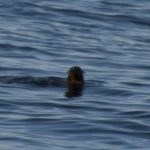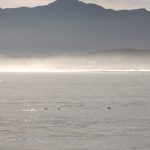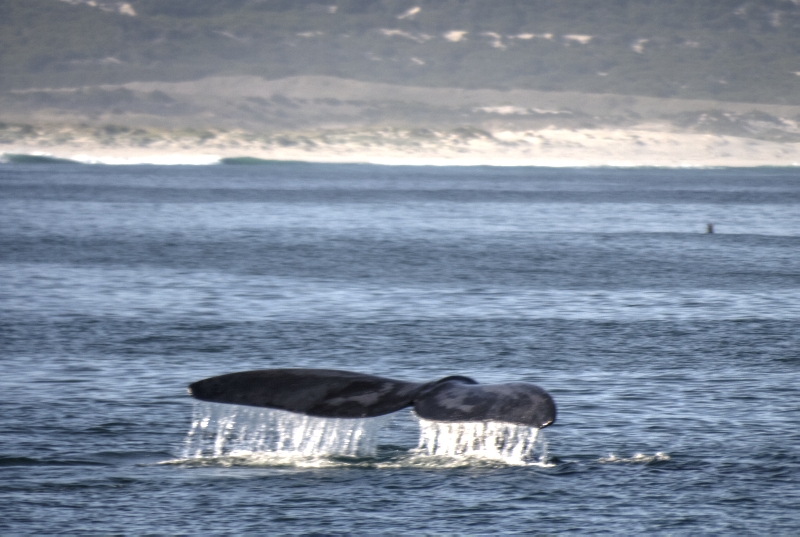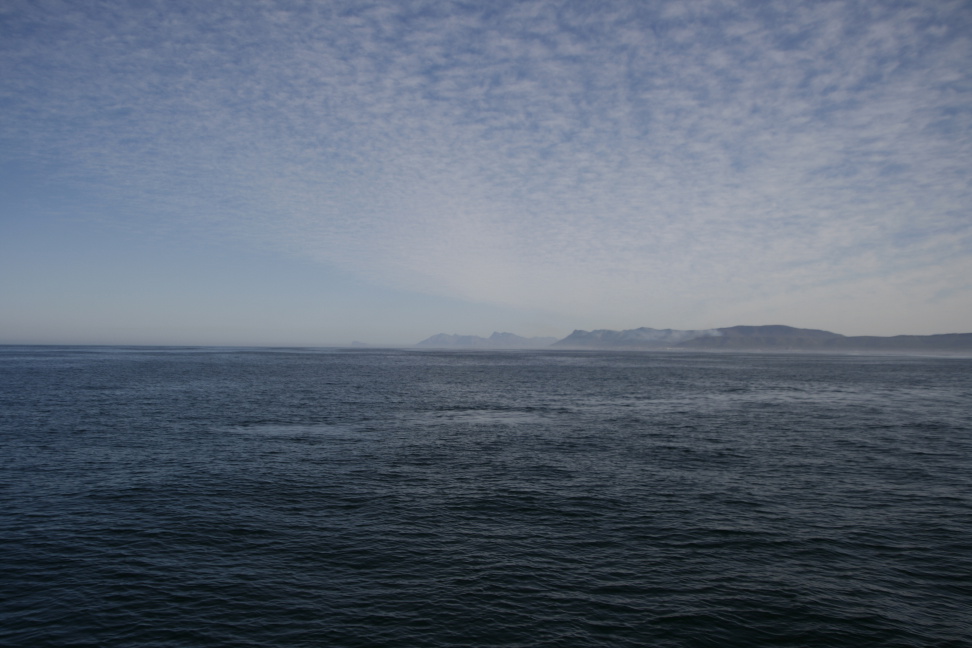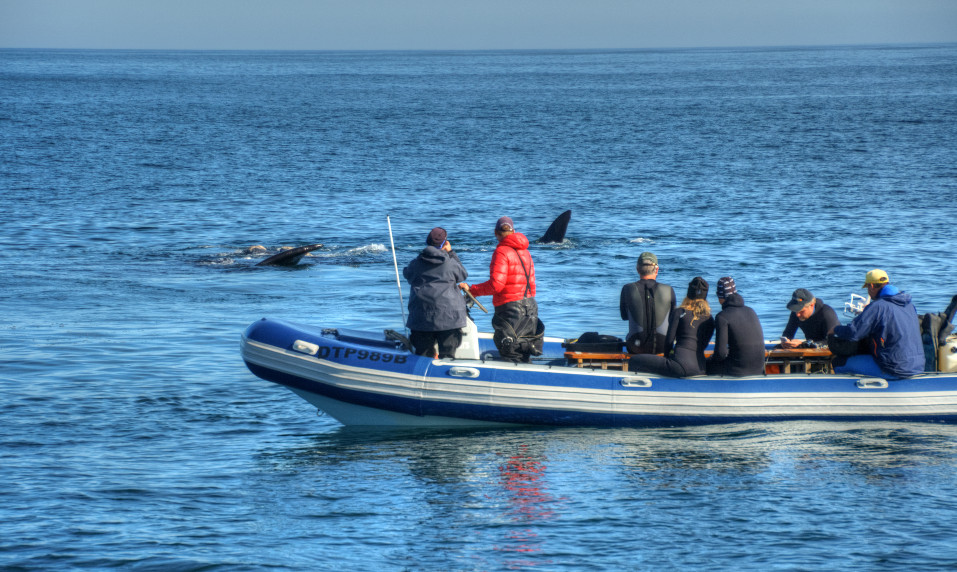Today, we all went for a whale watching trip on a large boat in Hermanus. What an experience on a wonderfully sunny winter morning!
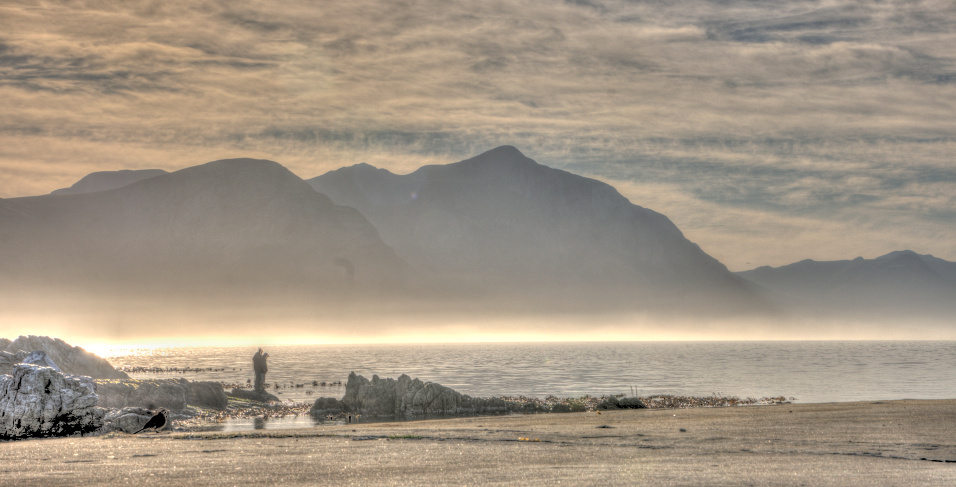
The previous days, whales had been spotted at the east coast of Whalers Bay, but of course, there’s no guarantuee to see them. On our trip along the Walker’s Bay towards the Eastern coast, we saw lots of cormorants, a few seals and several African Penguins (as seen in Betty’s Bay or Simon’s Town):
Finally, and after quite some wobbling back and forth along the coast of De Kelders, we not only saw several Southern right whales, but also Humpback and Brydes whales. After visiting the Museum of Whales in Hermanus, it was easy distinguishing Humpback Whale (has a Fin on the back, no callosities, bottom of tail fin is white/grayish sometimes yellow) vs. Southern right whales (no Fin on the back, callosites all over the body, two blow-holes leaving v-shaped blow) — distinguishing Humpback from Brydes whales was not that easy. Have to trust Ken, “the Whale Man”:
This Humpback whale was swimming right along the boat for a couple of minutes, just below the surface leaving so-called “footprints”, i.e. the eddies of his tail swirl to the surface leaving patterns:
In fact, a Humpback and Southern right whale were swimming right along each other:
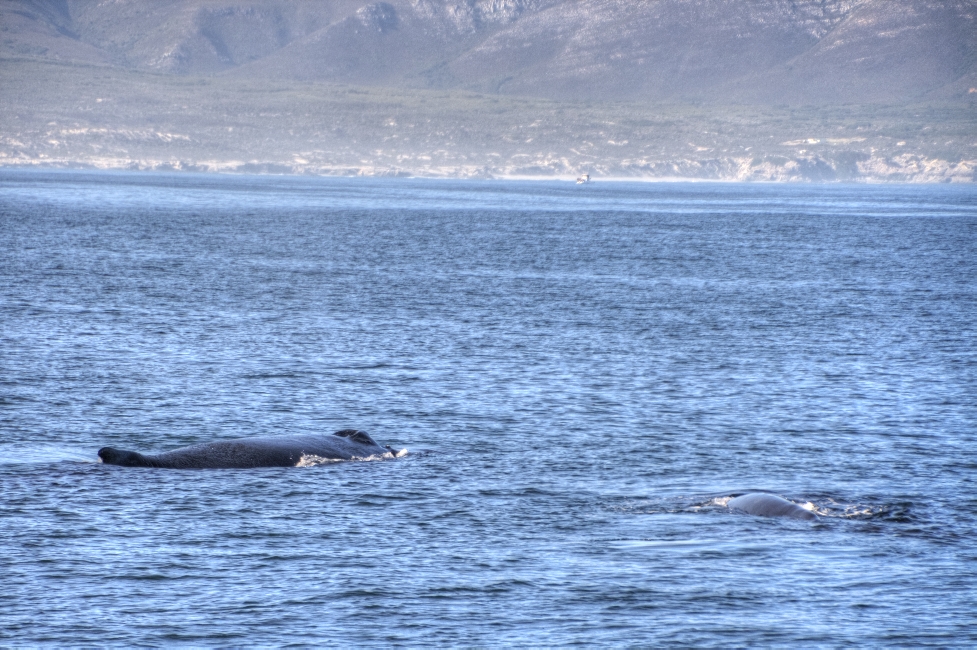
At the very end — what Ken introduced to us as a lazy bum whale, that would rest his tail on another one — we learned we witnessed a “ménage à trois” (or even four), as two or three male Southern right whales were courting a female… This caught the watchful eye of researchers who we’re told need special permits to dive with these whales:
Turn on the tube, and You’ll see whatever happened underwater on National Geographic — along with a Grizmek-like narrator…
Now, Ken the Whale man offered some interesting facts before and all along the way:
- Southern right whales get up to 18m long, and up to 75 tons heavy — but on average weight 45 tons; equivalent to 10 heavy elephants
- They belong to the group of Balaenidae that is they feed on small animals (plankton) in the summer months in Antarctica, 3000km south; they swim through a swarm of 1-3mm large Krill/Plankton with mouth wide open with their baleen filtering the water upon releasing.
- They were hunted for their blubber (which was used e.g. to lighten oil-lamps), their 450-550 baleen (which was used to make corset, shoe-inlets as well as umbrellas!) as well as bones (used for instruments) and of course the meat. Most of the species nearly became extinct.
- In 1935 hunting of Southern right whales was banned — with only some 300 specimen left. By now, the population seems to grow by 7% annually, with a population of 2000 whales — which is believed to be about 10% of what it used to be…
- Southern right wales feed during the summer months in Antarctica, while they swim “home” to the shores of Argentinia, Australia and South Africa to rest and breed (see above 🙂 ).

